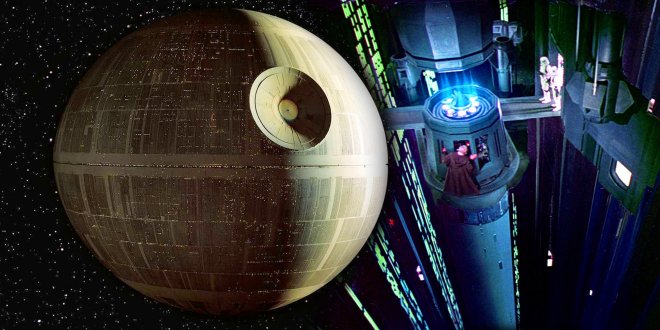
Summary
- The Death Star is powered by a fictional substance called hypermatter, which is formed from solar radiation and certain planetary materials.
- Kyber crystals are not the power source of the Death Star, but rather they focus and channel the energy of the hypermatter reactor for devastating blasts.
- Galen Erso sabotaged the Death Star by creating a critical weakness in its reactor, leading to the installation of a thermal exhaust port which became its Achilles heel and allowed Luke Skywalker to destroy it with a single shot.
The Death Star is the most iconic superweapon in Star Wars, and it's gradually become clear how it works. "That's no moon," Han Solo declared when he set eyes on the Death Star in the first Star Wars movie. He was right; the Imperial battle-station was the most dangerous superweapon the Star Wars galaxy had seen in a thousand years. Construction on the fiirst Death Star had actually begun before the fall of the Republic, with Palpatine using the discovery of planted Death Star plans on Geonosis to generate fear the Separatists were working on the project, and the Republic had to beat them to it.
The first Death Star took 20 years to make, in large part because the Sith had long since lost the knowledge of how to power such technology. As seen in Rogue One: A Star Wars Story, it was until Galen Erson learned to manipulate kyber crystals that the secret was rediscovered and the Death Star became possible. But Erso wasn't just the scientist who discovered how to power the Death Star, he was also the one who sabotaged it. Here's how the Death Star works, and how he planted a weakness that allowed Luke Skywalker to destroy it with one shot.





